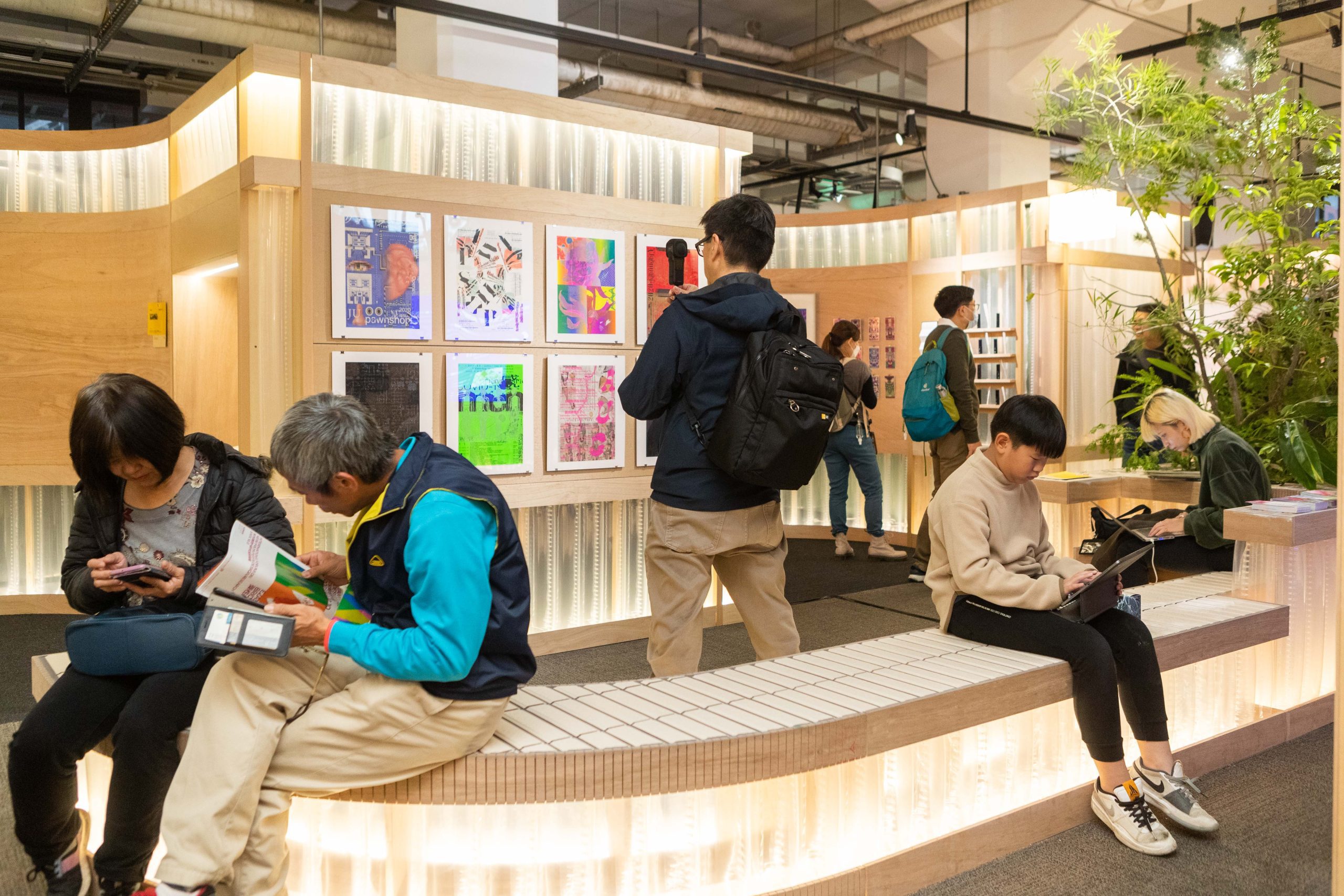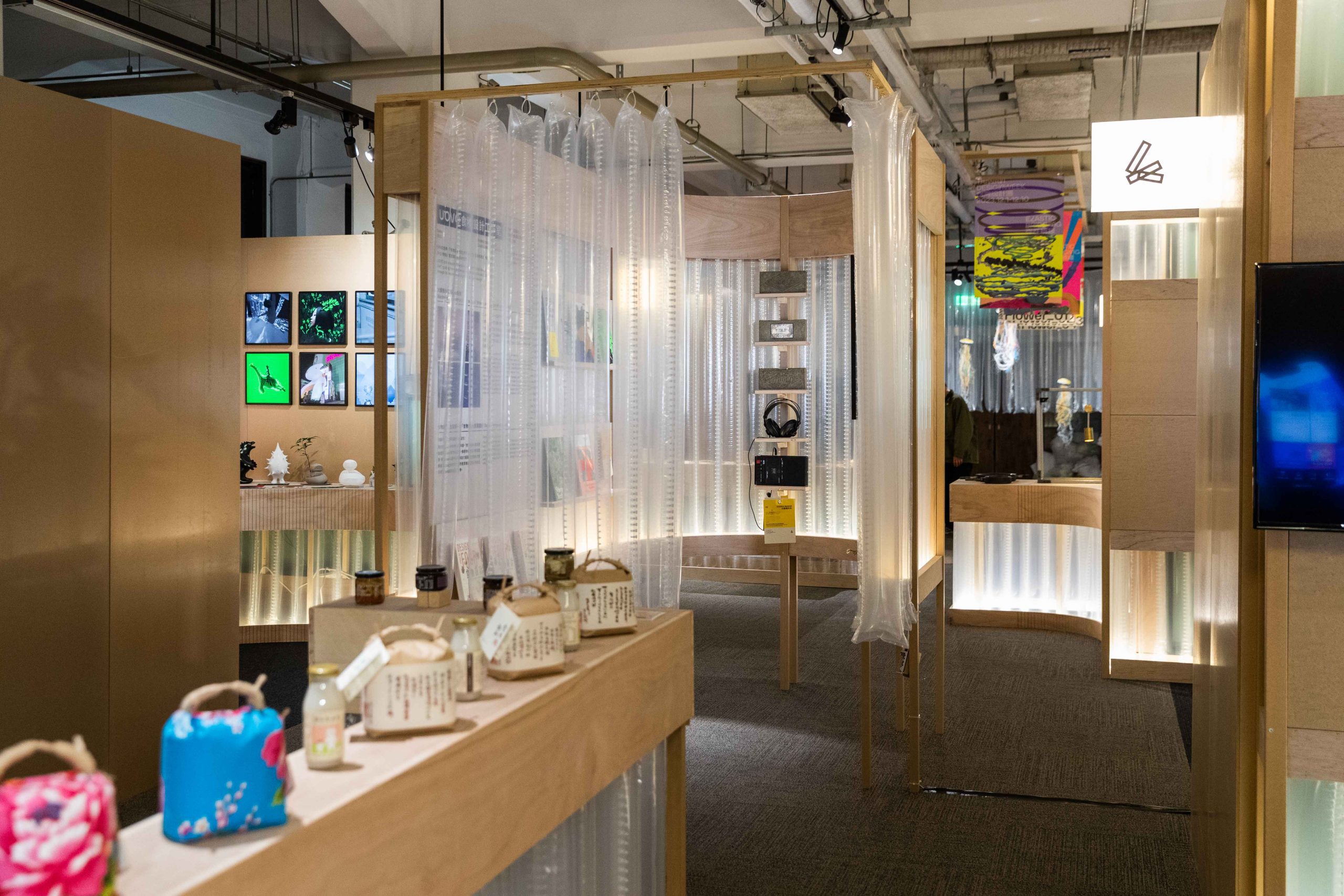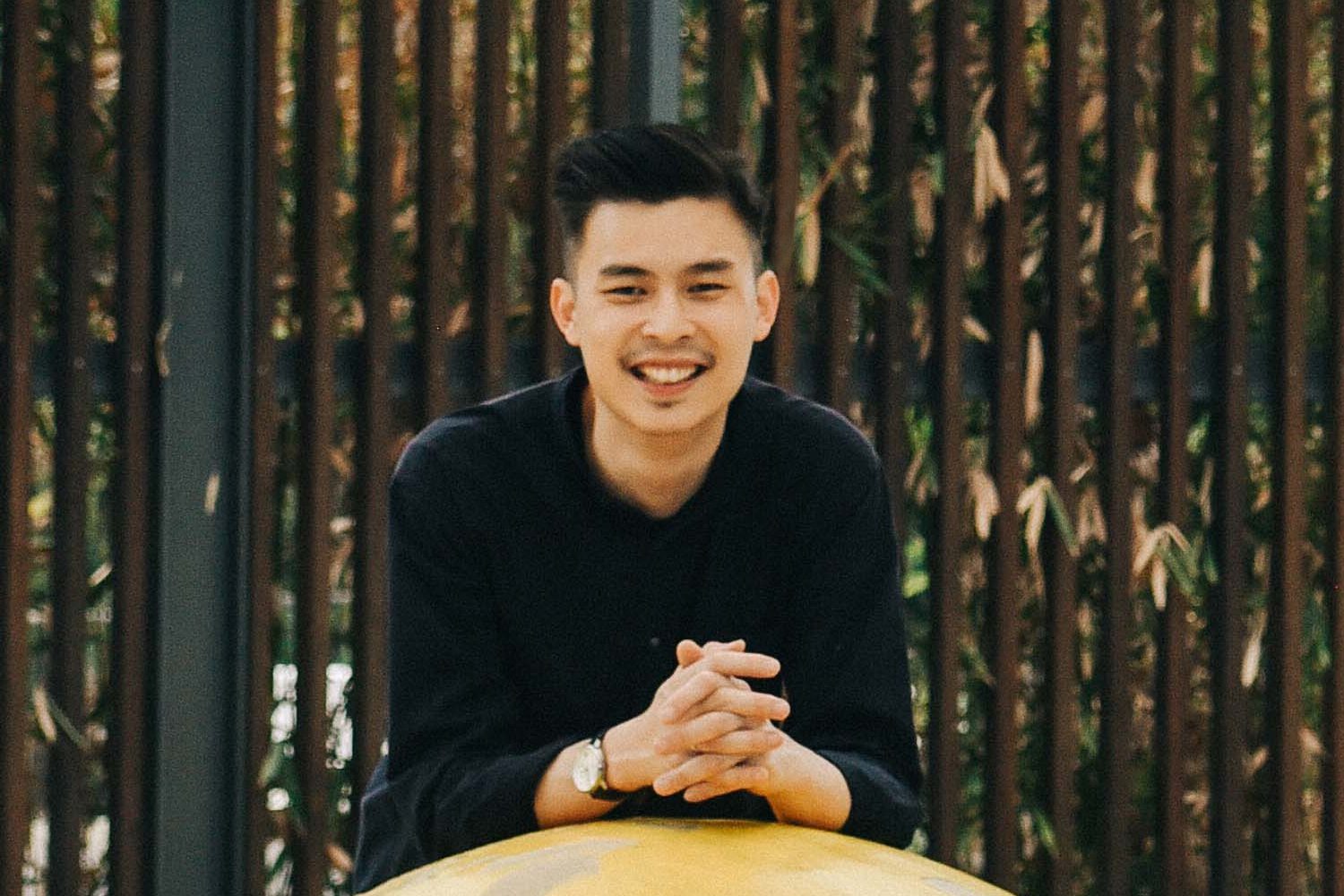ART4D INTERVIEWED VICTOR WU, THE PRINCIPAL CURATOR OF TAIWAN DESIGN WEEK 2023 ABOUT THE SIGNIFICANCE BEHIND THE CHOSEN THEME, ‘ELASTIC BRIDGING,’ AND CHANGES IN TAIWAN’S DESIGN LANDSCAPE IN THE POST-PANDEMIC ERA
TEXT: KITA THAPANAPHANNITIKUL
PHOTO COURTESY OF TAIWAN DESIGN RESEARCH INSTITUTE
(For Thai, press here)
In the closing months of the past year, the Taiwan Design Research Institute organized Taiwan Design Week 2023. Unfolding from December 1 to December 10 at the Songshan Cultural and Creative Park (SCCP), the event, curated under the theme ‘Elastic Bridging,’ emerged as a platform for thought-provoking discussions spanning the diverse tapestry of Taiwan’s design milieu. The showcase featured a spectrum of projects encompassing digital media, graphic design, product packaging, applied materials, organic creations, food design, and public aesthetics. Participating in the event were 54 local design teams and 5 international teams, including representatives from Thailand.
PAVA architects from Thailand collaborates with Mo Jirachaisakul, drawing inspiration from Taiwan’s iconic pearl milk tea cups and the popular hot pot, now embraced in Thailand.
art4d seized the opportunity to sit down and talk with Victor Wu, the principal curator of Taiwan Design Week 2023 and the visionary founder of the New York-based architectural studio Atelier TBD. Wu unveiled the origins and significance behind the chosen theme, ‘Elastic Bridging,’ shedding light on its symbiotic resonance with the shifting dynamics within Taiwan’s design landscape in the ‘post-pandemic’ era. The thematic exploration underscores the emergence of new paradigms and the reimagining of workplace relationships that necessitate heightened flexibility and connectivity more than ever before.

The annual theme and key visual of Taiwan Design Week 2023
art4d: What is your process and the message you aim to convey for Taiwan Design Week 2023?
Victor Wu: Firstly, we dedicated our first six months to researching the whole situation of the Taiwan design industry. What we realized was that before the pandemic, a lot of Taiwanese designers sought opportunities abroad— in the United States, Europe, and various other countries. That means they spend most of their time contributing their talents to other countries, which is fine, but when they come back to Taiwan again after their retirement, it means their invaluable contributions mostly belong to other countries, not to Taiwan. On the other hand, although there are still designers working in Taiwan, which seems great, they might miss the chance to broaden their horizons or learn something new from the world, which is a crucial part of being a designer.
Suddenly, during the pandemic, a ton of designers returned to Taiwan. Thanks to new collaborative tools like Google and Zoom, we realized that we could work on projects from anywhere. Many design studios relocated back to Taiwan, yet their focus remained on international projects. This shift provided them with the opportunity to absorb valuable information and innovative ideas from abroad and bring them back to reinforce the design landscape in Taiwan. In summary, the design field in Taiwan is actually kind of exploding, I mean in a good way.
art4d: Why is ‘Elastic Bridging’ the main Taiwan Design Week 2023 theme?
VW: According to the major change occurring from the pandemic. The approach to collaboration has shifted significantly from the traditional methods. Before the pandemic, studios engaged in formal agreements, following a more structured and serious collaboration. However, in the post-pandemic era, these collaborations have become more relaxed, with a more informal and spontaneous initiation of projects. The shift is partly due to the downsizing of design studios during the pandemic, where the number of employees has decreased. Unlike the previous model, with around 20 to 50 employees, most design studios in Taiwan now consist of only 5 to 10 people.
This restructuring has led to a new form of collaboration where team members are encouraged to work on their own projects using the resources within the studio. This change transforms the perception of the studio from a rigid silo structure to a recognition of the need for mutual support and cultivation within the design community. By allowing individual projects, studios aim to foster an environment of collaboration, helping each other to enhance creative thinking and design development, leading towards a positive trajectory for the whole design community in Taiwan.
This circumstance brought us to the ‘elastic bridging.’ When we bridge something always in a rigid way, but after the pandemic, everything is rather flexible, dynamic.
art4d: How do you integrate this idea into the curation in the space of SCCP, the former tobacco factory, which is completely rigid and possesses a distinctive historical context?
VW: The original layout was very rigid in terms of the walls and all these cabin-like squares. I think a lot of previous design teams struggled to figure that out, and we encountered similar struggles as well. But then we came up with this idea about how we can really bring the experience into the showroom, more like a representation of a scene. We decided to separate the exhibition into six different spaces. Each section actually represents a portion or fragment of Taiwanese design that neatly permeates our everyday lives.
For example, we bring the Taiwanese trees into the showroom. Those trees are real, 3 meters tall. When we go to Yangming Mountain, those are the trees we can see when we go hiking. So we capture all these experiences and put them into the showroom so that everyone, including both Taiwanese and foreigners, can come to the showroom and concentrate on all these experiences. Maybe the cherished nature, the lively nightlife, etc. It doesn’t matter where you are. The truth is that every part of your daily life is a collaborative work of many different designers.

As one of 54 exhibitors, Studio HJL regards plant landscapes as dynamic, organic sculptures, employing sculptural concepts to shape the visual character of local plant scenery.
A further challenge lies in how we create the atmosphere within space. There’s a fine line between a fine art-ish kind of experience and a floating kind of experience. We are trying to stand not towards any side but in the middle of it. You can still see some products, but you won’t feel like you are in a shopping mall; you will feel like it’s very natural to see them there.
It’s like your house. When you enter a hotel lobby, you encounter numerous objects: flowers, coffee makers, and TVs. However, the atmosphere doesn’t resemble a shopping experience. It feels natural, with elements like a refrigerator and ambient lighting seamlessly integrated into the surroundings—present everywhere, just beneath our ideal perspective. If you notice the bench in the exhibition area, and as you approach, it intuitively invites you to sit. Upon sitting, you’ll find an introduction card nearby. As you read, you realize, “Ah, the wood is sourced from the Kaohsiung factory, and the tiles are from Taipei.” Through this spatial experience, you come to understand that these elements originate from one studio to another. And yet, it reflects the everyday life of the Taiwanese.

The hotel lobby-style space within the theme exhibition provides visitors with a relaxed and serendipitous environment to encounter design works.
As well as the structure utilized in the exhibition area, it is constructed from a wooden frame filled with air columns made of transparent plastic bags. It aims to embody the concept of elastic bridging, evoking a sense of lightness and sponginess. The air columns expand and fill the space, significantly increasing its volume. Initially, it resembles a compact package fitting into a small box, but upon inflation, it expands and spreads, covering the entire area.

The curatorial team extensively utilizes air columns to arrange the exhibition space, cleverly showcasing the flexible adaptability of Taiwanese design characterized by its small-scale and robust resilience.
art4d: Do you have a specific topic that you are focusing on as a designer?
VW: There’s actually no specific topic that we are focusing on. But there is one thing, which is our core concept. It’s like everything is ‘yet to be designed’, and we’re also focusing on ‘texture,’ which is the closest word we could find in English. In Mandarin, there’s a really precise word called ‘zhìgǎn’. When we talk about texture, it’s more like the surface, but the texture here we are talking about is more like an overall experience. We believe that we are creating the texture of every project.
For example, a university has granted us permission to design the certificate for an award. However, the reality is that most of them look unattractive, and those who have earned the award may not wish to showcase it. Therefore, we are reconsidering this issue and suggesting a solution: Why don’t we design it with more aesthetics, as if it were a painting or a drawing?
You can hang it on the wall. What’s the value of such a certificate? It’s to remind you that you achieved a significant prize and that value is personal to you. Once you win it, you place it in your house, just hanging it on the wall like the conventional painting; only you know that you earned that prize, yet it looks like a piece of art. That’s the essence and the texture I’ve mentioned before. The ‘texture’ in our interpretation is more than just a tactile surface; it’s an overall sensory experience. It involves smells, how you feel it, temperature, visual aspects, sound—essentially encompassing everything.
art4d: Last question. Due to Taiwan being influenced by various cultures, what keywords do you think best define the essence of design in Taiwan?
VW: The Taiwan Design Week is currently attempting to approach this topic, and I may not have a definitive answer. If you ask me about keywords, I believe it’s ‘hybrid.’ It’s sometimes alien but can also be very local. I think this is because Taiwan is situated on a small island, and as a result, we constantly absorb different information from around the world. For example, influences from Japan, China, the USA, Korea, and even Thailand – all these elements are mixed and twisted, like a cocktail. Therefore, I don’t think there’s a specific style of Taiwanese design, but we are in the process of exploring everything together.

 Victor Wu is the Co-curator of Taiwan Design Week 2023.
Victor Wu is the Co-curator of Taiwan Design Week 2023.